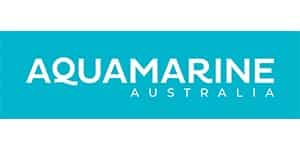July 2025
Check out iNaturalist to view the July census sightings.
July Sea Slug Census results
April 2025
Check out iNaturalist to view the April census sightings.
April Sea Slug Census results
January 2025
Check out iNaturalist to view the January census sightings.
January Sea Slug Census results
October 2024
Check out iNaturalist to view the October census sightings.
October Sea Slug Census results
June/July 2024
Check out iNaturalist to view the June/July census sightings.
June/July Sea Slug Census results
March/April 2024
Check out iNaturalist to view the March/April census sightings.
March/April Sea Slug Census results
January 2024
Check out iNaturalist to view the January census sightings.
January Sea Slug Census results
October/November 2023
Check out iNaturalist to view the October/November census sightings.
October/November Sea Slug Census results
August 2023
Check out iNaturalist to view the August census sightings.
August Sea Slug Census results
April 2023
Check out iNaturalist to view the April census sightings.
April Sea Slug Census results
January 2023
Have a look at all of the January sightings on iNaturalist.
January Sea Slug Census results
October 2022
You can check out everything that was seen during the October census on iNaturalist.
October Sea Slug Census results
July 2022
All the photos and stats from the July census can be viewed on iNaturalist!
July Sea Slug Census results
March 2022
In March this year we moved to iNaturalist to collect our Sea Slug Census data. You can see where sea slugs were observed, who found the most species, and what those slugs look like all at our March Census project page.
Check out the March Sea Slug Census Results
January 2022
Our first Census for 2022 saw the ReefWatch team join Otway Ocean Care at Marengo reef for some sea slug searches. Around the state, over 80 people joined in the Census fun. In all, 17 individuals or groups recorded 70 species of sea slug from over 300 photos, another fantastic effort.
Download report for January 2022
October 2021
With stay-at-home orders lifted, many people returned to the coastal places they loved just in time for our October Census. 18 individuals or groups submitted over 450 photos between them! In all, we recorded 92 species of sea slug.
Download report for October 2021
July 2021
Special thanks to the 8 teams or individuals who braved the chilly waters in between lockdowns to submit photos of 57 different sea slug species, from Port Phillip Bay to far east Gippsland. Capturing data from different times of the year, including during winter, helps us gain a better understanding of our southern sea slugs and their occurrence in space and time.
Download full report for July 2021
March 2021
36 teams submitted a total of 492 photos to the March 2021 Census, and 98 species were recorded. This is the most ever recorded for a Melbourne Census and included good representation of the major sea slug groups. There were quite a few first-time sightings to add to our records, and our database on Victoria’s sea slugs continues to grow. Many thanks to all the teams and individuals that contributed to this fantastic Census.
Download full report for March 2021
March 2020
250 photos were submitted to the Census for March, and with everything going on we had to rely on snail mail to get them through to our expert Bob Burn for identification and judging. We ended up recording 61 species of sea slug! And we’re still adding species to our project records each new Census. Well done everyone.
Download full report for March 2020
January 2020
Smoke from the recent bushfires had severely impacted much of the Victorian coast this weekend, but around 100 intrepid nudi hunters made the best of conditions and submitted over 200 photos to the Census. We still recorded 72 species of sea slugs! And the quality of photos made Bob Burn’s judging of the competition a tricky task. Thanks to everyone who submitted to our first true summer edition of the Census.
Download full report for January 2020
October 2019
What can we say other than we were blown away by the number of nudis spotted this time! 88 species to be exact, some new additions to our records and a few entries that left our experts pleasantly surprised. October certainly seems like a busy time for both our nudis and the keen citizen scientists who search for them!
Download full report for October 2019
June 2019
Our winter wonderland edition of the Melbourne Sea Slug Census saw many people brave the cold water, but only 6 groups of nudi hunters managed to photograph slugs during that time. Still, 29 species of slug were sighted, with some really beautiful submissions and new species to add to the Melbourne census records. A commendable effort for a very chilly weekend!
Download full report for June 2019
March 2019
Melbourne Sea Slug Census III was held over the 15-18 March. Many groups reported seeing far less slugs than expected, but all in all, over 100 nudi hunters that were out and about across the weekend recorded 48 individual species between them. Well done everyone!
Download full report for March 2019
October 2018
The second Melbourne Sea Slug Census took place on the 12-15 October. Over four days, enthusiastic teams and individuals managed to find an incredible 75 species of sea slugs! It was a fantastic effort and the overall quality of images submitted impressed everyone involved in sorting and identification. Some of the species photographed during this Census have rarely been seen in Victoria, even by our leading experts!
Download full report for October 2018
April 2018
The first Melbourne Sea Slug Census was held on the on the weekend of 21-22 April. Thank you to the over 150 people who photographed different sea slugs (nudibranchs) in Port Phillip Bay, Western Port Bay and surrounds and submitted them to ReefWatch. Together, we found a total of 53 species of nudibranch!
Download full report for April 2018












